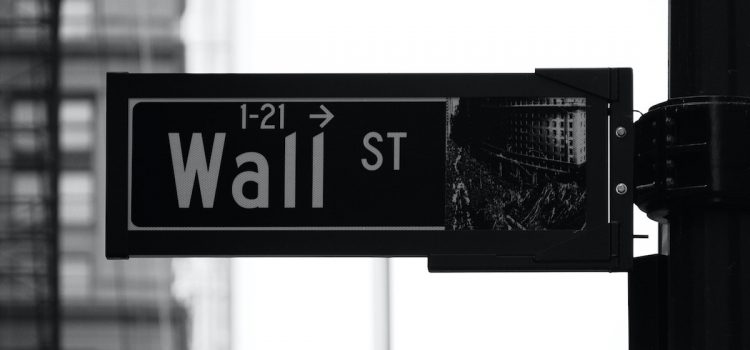

This article is an excerpt from the Shortform book guide to "Flash Boys" by Michael Lewis. Shortform has the world's best summaries and analyses of books you should be reading.
Like this article? Sign up for a free trial here .
Who is Brad Katsuyama? What part did Katsuyama play in exposing Wall Street for using high-frequency trading?
In Flash Boys, author Michael Lewis writes about how Brad Katsuyama, a Canadian trader with the Royal Bank of Canada (RBC), led an investigation into the unethical practices of high-frequency trading (HFT). Katsuyama further found that Wall Street’s firms and banks were using HFT to exploit regular investors.
Continue reading to learn more about Brad Katsuyama’s investigation and his solution to fighting against HFT.
Who Brought Attention to High-Frequency Trading Problems?
In the late 2000s, Brad Katsuyama noticed changes in the stock market that clued him into systemic problems caused by HFT, which is a type of electronic trading platform that uses automated computer algorithms to very quickly buy and sell large quantities of stocks. While Katsuyama wasn’t the first person to learn about HFT and its tactics, he was one of the first to identify and raise awareness of how HFT was a problem.
While working at RBC, Katsuyama noticed that he couldn’t trade successfully anymore. In the time between sending out his customers’ orders and actually buying stocks, the stock market would change, forcing him to pay more money. Katsuyama asked RBC executives for permission to investigate why he was losing money in his trades, and they agreed.
Katsuyama Builds His Team
Lewis explains that Brad Katsuyama first learned about HFT when HFT executives asked RBC to provide them with access to the Canadian stock market. Katsuyama thought this was a bad idea, since he couldn’t find anyone who could explain HFT to him, and he suspected that HF traders might be the reason why he was paying more for his trades.
Katsuyama assembled a team to help him investigate the practice. He recruited Ronan Ryan, a telecommunications expert who helped trading firms increase their signal speed. After pooling their knowledge, Katsuyama and Ryan met with different Wall Street executives, educating them about how HFT tactics exploited the stock market.
Brad Katsuyama also added John Schwall to his team. Schwall was a product manager, the intermediary between programmers and traders. Soon after joining the team, Schwall investigated the history of the stock market and its regulations. This information supplemented Katsuyama’s knowledge of the stock market, its conditions, and how HFT exploited those conditions.
As part of their investigations, Brad Katsuyama’s team ran experiments to understand how HFT worked. As a result of these experiments, Katsuyama came to understand the tactics of HFT and how it impacts the market.
Flash Crash
After years of unregulated high-frequency trading, Wall Street experienced a “flash crash” in 2010. A flash crash is a stock market crash that happens quickly—stock prices drop dramatically before recovering within a few minutes. But during that time, 20,000 stocks traded at dramatically different stock values.
According to Lewis, no one could pinpoint a reason behind the flash crash. Katsuyama couldn’t access the data that could prove HFT caused the crash, since this information wasn’t public—it belonged to the HFT firms and exchanges—but he knew that the flash crash was a result of HFT.
The flash crash marked a turning point in the investing world. Investors were interested in what was going on in the market—and why it had dropped by 600 points so suddenly. People called Katsuyama and his team to set up informational meetings where he educated investors and executives about HFT.
Katsuyama’s Solutions to High-Frequency Trading
After discovering HFT’s tactics and Wall Street’s greedy response to it, Katsuyama and his team decided to fight HFT rather than mimic its tactics to make money. We’ll discuss his team’s first attempt at fighting HFT: a trading program called Thor. Then we’ll explore their second attempt: a new stock exchange.
Thor
As their first step to addressing HFT techniques, Katsuyama’s team developed a trading software called Thor. Lewis explains that Thor slowed down a broker’s order so that it arrived at all exchanges simultaneously. While it may seem counterintuitive to go slower, this tactic actually helped Katsuyama’s team successfully fill their orders and saved them money. Slowing the orders down prevented an HF trader from front-running it to another exchange and changing the price of the stock.
For example, without Thor, a broker’s order arrived at BATS in three milliseconds and NYSE in six milliseconds. In the three milliseconds before his order got to NYSE, an HF trader saw his order at BATS, thus revealing that there was a known buyer for a particular stock. The HF trader raced to NYSE, bought that stock, and sold the stock to the broker at a higher price.
But Thor slowed down the speed of the broker’s BATS time, meaning his orders arrived at both BATS and NYSE in six milliseconds. The HF trader then wouldn’t have a time advantage, removing the opportunity to front-run the trader’s order.
IEX: A Fair Stock Exchange
Next, Brad Katsuyama and his team quit their jobs at RBC to create their own stock exchange. They called it the Investors Exchange, or IEX. The purpose of IEX was to make investing fair by preventing the predatory behavior of HF traders.
Lewis believes that they succeeded—IEX ranked number one on a list evaluating exchanges on how well they adhere to trading regulations. IEX also had larger trade orders than other exchanges, as well as more random trades. So if a stock changed price in another market, IEX was less likely to execute trades because of it.

———End of Preview———
Like what you just read? Read the rest of the world's best book summary and analysis of Michael Lewis's "Flash Boys" at Shortform .
Here's what you'll find in our full Flash Boys summary :
- Why high-frequency trading (HFT) is a threat to your investments
- A look at Wall Street’s greedy response to HFT
- How Canadian trader Brad Katsuyama tried to fight the problem






